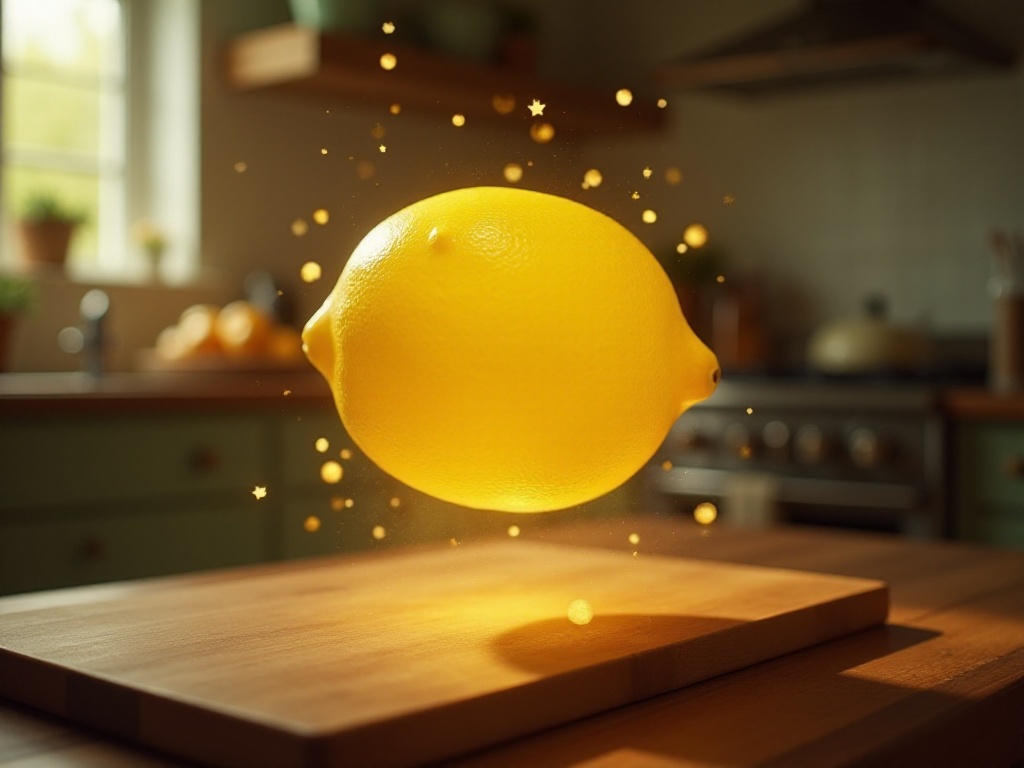Introduction
As a working professional who just moved out on their own, cleaning the kitchen after work is the most headache-inducing task. Especially in the beginning, looking at the greasy stovetop and dirty microwave, I didn't know where to start. But after years of exploration, I've finally found some particularly effective cleaning methods that I'd like to share with everyone today.
To be honest, I also found kitchen cleaning extremely troublesome at first. After cooking, I just wanted to lay down and not deal with cleaning up. But obviously, this couldn't continue, after all, no one wants to live in a messy environment. Later, I learned many practical cleaning tips from the internet and friends around me, and gradually developed a cleaning routine that works for me.
Appliance Care
When it comes to cleaning kitchen appliances, the microwave is probably the most troublesome. Especially when milk or soup boils over, those stains can drive you crazy. I tried various cleaners before, but they either had too strong an odor or weren't effective enough. Until I saw a lemon cleaning method in a short video, which finally proved to be the solution.
How exactly do you do it? It's actually very simple - prepare a microwave-safe bowl, fill it with some water, and add half a sliced lemon. Put this bowl in the microwave and heat on high for two minutes. During this time, you'll see the water start to boil, with lemon fragrance mixing with steam circulating inside the microwave. This process not only softens stubborn stains but also eliminates odors from the microwave.
After the two minutes are up, don't rush to open the microwave door. Let the steam stay inside a bit longer for better results. Wait another three to five minutes until the temperature drops somewhat, then wipe the microwave interior with a clean cloth. You'll find that stains that were previously impossible to remove now wipe away easily. Plus, the lemon fragrance will linger in the kitchen for a long time, filling the entire space with a natural aroma.
Garbage disposal cleaning is another issue that many people tend to overlook. Many might think that since the garbage disposal is meant for handling waste, it doesn't need special cleaning. This thinking is actually incorrect. A garbage disposal that isn't cleaned regularly will not only emit unpleasant odors but may also affect its normal operation.
The simplest and most effective cleaning method is using ice cubes. I learned this trick from a repairman who said many restaurants use this technique. The specific method is: pour a handful of ice cubes into the disposal, then turn it on. The ice cubes will clean food residue off the blades during rotation while also eliminating odors. For better results, you can add some coarse salt to the ice cubes, which helps with descaling.
After dealing with the ice cubes, throw in a few lemon peels and run the disposal again. The lemon peels will further clean the disposal while leaving a fresh lemon scent. A garbage disposal cleaned this way will run very smoothly and won't emit any unpleasant odors.
Speaking of appliance cleaning, another often overlooked item is the rice cooker. Many might think that since the rice cooker is just for cooking rice, a simple rinse is enough. Actually, if the inner pot and sealing ring aren't regularly deep cleaned, they will not only develop odors over time but might also affect the taste of the rice.
The key to cleaning a rice cooker is taking care of the hard-to-reach areas. It's recommended to soak the inner pot in warm water with baking soda once a week to remove stubborn rice residue. The sealing ring should be regularly removed and rinsed with clean water, and if necessary, can be gently scrubbed with a toothbrush. For small areas like steam vents and switch buttons, use cotton swabs dipped in a suitable amount of cleaner.

Cookware Maintenance
Cleaning baking sheets is a skilled task, especially those burnt black stains left from roasting fish or meat, which can easily scratch the pan if not handled properly. I once scratched my new baking sheet in several places because I scrubbed too hard with a steel wool pad. Later, I discovered the baking soda and vinegar method, which finally solved this problem.
The specific steps are as follows: First, scrape off any loose debris from the baking sheet, then evenly sprinkle a layer of baking soda. Don't spread the baking soda too thick; a thin layer is enough. Next, use a spray bottle to evenly spray white vinegar onto the baking soda. You'll see the baking soda and vinegar react, producing many small bubbles - this is the cleaning action at work.
After waiting 5 minutes, wipe gently with a damp cloth. You'll find that the previously stubborn stains have been softened and are easy to wipe away. For particularly difficult areas, you can gently scrub with a soft brush. Finally, rinse with clean water and dry with a towel. A baking sheet treated this way will be as clean as new without any scratches.
Cutting board cleaning and disinfection is crucial for kitchen hygiene. Especially after cutting raw meat or seafood, bacteria can easily grow if not cleaned properly. I used to use bleach for disinfection but never felt completely comfortable with it. Until I discovered the lemon cleaning method, I finally found a better solution.
The lemon cleaning method is not only environmentally friendly and safe but also very effective. The specific method is: Take half a fresh lemon, cut side down, and rub it across the cutting board surface. The lemon juice will penetrate the board's texture, both killing bacteria and removing odors. After letting it sit for 10 minutes, rinse with clean water. For wooden cutting boards, finally dry with a towel and air dry in a ventilated place to prevent mold.
For particularly stubborn odors, like cutting boards used for garlic or curry, you can sprinkle a layer of baking soda after the lemon cleaning. Gently wipe with a damp cloth, then rinse clean. This double approach can remove even the most persistent odors.
Wok maintenance is another issue many people tend to overlook. Many might think it's normal for a wok to get blacker with use, but this thinking is incorrect. If too much burnt material accumulates on the bottom, it not only affects heat conduction but may also produce harmful substances.
The most important thing in cleaning a wok is using the correct method. For stainless steel woks, you can use the boiling vinegar and water method to remove scale. For iron woks, it's recommended to wipe with salt after each use to remove oil and prevent rust. As for popular non-stick pans, remember never to use metal spatulas or steel wool to avoid scratching the non-stick coating.

Innovative Tips
Speaking of innovative cleaning methods, I recently discovered a particularly useful dryer sheet cleaning method. I discovered this method accidentally while cleaning a baking dish. One time when I was too lazy to use cleaner, I just grabbed a dryer sheet to wipe it, and surprisingly, it worked amazingly well.
It turns out that the fiber structure of dryer sheets is particularly suitable for absorbing oil and grease. Using it to wipe baking dishes not only removes surface oil but also won't scratch the dish. Now, every time I use a baking dish, I first wipe it with a dryer sheet, which makes subsequent cleaning much easier.
Maintaining stainless steel surfaces is another headache. Fingerprints on refrigerator doors, smudges on cabinet handles - these are all culprits that make the kitchen look messy. I tried many methods before finally discovering that olive oil polishing is the simplest and most effective.
The specific method is: Take a tiny bit of olive oil, dab it on a soft cloth and gently wipe the stainless steel surface. The olive oil will form a protective film on the surface, not only restoring the shine to stainless steel but also preventing new fingerprints. However, note that very little olive oil should be used, and you should wipe with a dry cloth afterward to prevent dust from sticking.
Another trick I recently discovered is using coffee grounds to eliminate odors. Coffee grounds actually have very strong absorption capabilities and can absorb various odors. I now dry used coffee grounds and place them near the refrigerator or sink, and they work better than activated charcoal. Plus, the used coffee grounds can be used directly as fertilizer afterward, making it particularly environmentally friendly.
Cleaning the range hood has always been a major challenge, especially the grease hidden in the crevices, which is particularly difficult to clean. I found that using hot water with dish soap is particularly effective. First, soak the range hood filters in hot water with an appropriate amount of dish soap for about 15 minutes. Then gently scrub with a soft brush, and finally rinse with clean water. A range hood treated this way will not only be clean but will also have better ventilation.

Concluding Thoughts
To be honest, when I first started living independently, I also found kitchen cleaning particularly troublesome. But through continuous exploration and trial, I gradually found cleaning methods that work for me. Looking back now, once you master the correct methods, cleaning work isn't really difficult.
Moreover, I've discovered that keeping the kitchen regularly clean not only improves mood but also inspires interest in cooking. Every time I walk into a clean and tidy kitchen, seeing the bright countertops and shining utensils makes cooking much more enjoyable.
By the way, I've found that everyone has their own unique cleaning tricks. For example, I have a friend who likes to clean glass with white vinegar, and some people use newspapers to clean windows. If you have any effective cleaning methods, feel free to share them in the comments. Your experience might help others.
Finally, I want to say that cleaning the kitchen doesn't require expensive cleaning products; many common household items can be put to good use. Things like lemons, baking soda, and white vinegar are not only cheap and environmentally friendly but also work particularly well. The important thing is to develop a habit of cleaning as you go, so stains don't accumulate too much, making cleaning much easier.
Looking forward to sharing more practical household cleaning tips with everyone next time. Remember, a clean and tidy kitchen not only improves quality of life but also makes every meal something to look forward to. Let's work together to create a comfortable and pleasant cooking space!


